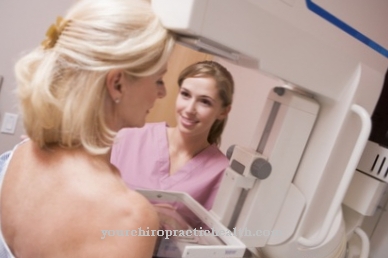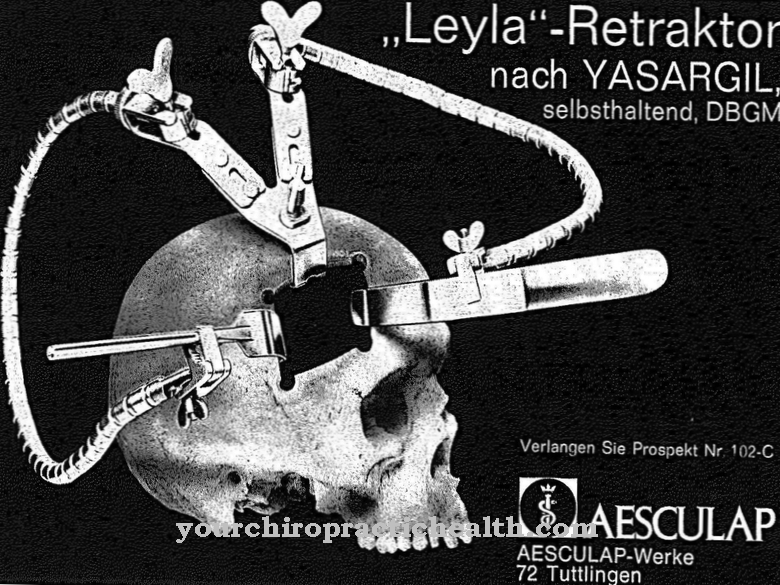The In vitro fertilization is also as Fertilization in the glass known and corresponds to one of the most important methods of artificial insemination, in which the doctor takes egg cells from a woman under hormonal stimulation, which are brought into contact with the man's sperm in a test tube.
After fertilization, the fertilized egg cells are cultivated in an incubator and transferred back to the mother on the second or fifth day, who carries the resulting fetus with a probability of between 20 and 40 percent. In addition to the risks of an operation, the mother also takes on the side effects of hormone treatment with in vitro fertilization and also risks her partnership, since unsuccessful artificial insemination treatments in addition to depression place a high burden on the partnership.
What is In Vitro Fertilization?

The medical professional understands in vitro fertilization to be a process of artificial insemination. The method has existed since the 1960s and 1970s, when Nobel laureate in medicine Robert Edwards and his colleague Patrick Steptoe laid the foundation for the method. Within Germany, there are certain requirements for admission to in-vitro fertilization treatment.
For example, the spouses must have had unprotected sexual intercourse regularly for one year without being able to initiate a pregnancy. Popularly, the in vitro fertilization process is also called fertilization in the glass. This expression refers to the classic form of the method in which the sperm are brought into contact with the egg cell in a test tube and the fertilized egg is transferred back to the mother.
In Germany there are currently over 100 specialist centers for in vitro fertilization, which carry out more than 50,000 treatments per year at individual treatment costs of around 4,000 euros. Married couples between 25 and 40 years of age can share the costs through the health insurance company. Unmarried couples must pay the full cost out of their own pocket.
Function, effect & goals
In-vitro fertilization is intended to help couples achieve their desire to have children if fertilization in the conventional way is not successful. At the beginning of the treatment, sperm and egg cells are obtained. The partner's genetic makeup is first checked for errors in order to rule out hereditary diseases for the later fetuses.
In the course of the so-called downregulation, the maternal ovaries' own activity is shut down with medication in order to be able to obtain even more eggs through the subsequent administration of hormones. The hormones are usually given in the form of FSH preparations, which are injected under the skin for around 11 days and allow several egg cells to mature. From the sixth day of the cycle, the egg cells are usually observed by ultrasound, with a decision on a specific day of collection being made on the ninth day, depending on the results of this observation.
At around the same time, the man's sperm are checked for mobility, density and bacteria. By administering the hormone HCG, the treating physicians trigger ovulation. Doctors puncture the follicles transvaginally and remove follicular fluid. At the same time, the sperm are obtained through masturbation or microsurgical interventions. The egg cells obtained by the puncture are then fertilized with the sperm obtained in this way. There are four methods available for this, whereby the classic method corresponds to spontaneous fertilization in the test tube.
If the sperm quality is impaired, however, fertilization can also take place with the help of a pipette inserted into the attached egg cell. The fertilized egg cells are cultivated in a glass, placed in an incubator and subjected to quality tests. Ideally, the embryo transfer of two fertilized egg cells takes place on the second or fifth day after fertilization. Around two weeks after the puncture, a pregnancy test is carried out, which, if in vitro fertilization is successful, comes to a correspondingly positive result.
Risks, side effects & dangers
The rate of births after in vitro fertilization is relatively low. It lies between 20 and 40 percent and depends heavily on the age of the mother, the time at which the egg cell was removed and the total number of fertilized egg cells. Since the egg cells are removed in the course of an operation, in-vitro fertilization is associated with all the associated risks for women.
These risks include, above all, infection and the complication caused by damage to internal organs. Continuing hormone treatment may have side effects for the mother such as weight gain, severe mood swings, edema or an increased risk of heart attacks. High-risk pregnancies are also conceivable through in vitro fertilization. Since these pose health risks to both the mother and the fetuses, German specialist centers and clinics are allowed to transfer a maximum of three fertilized eggs back to the mother, which keeps the risk of multiple pregnancies low.
The psychological consequences of the treatment should not be underestimated. Above all, failed in vitro fertilization can trigger severe depression and cause problems in relationships. In individual cases, the partnership breaks up with the treatment. A legal and ethical peculiarity of the fertilization method is the question of the whereabouts of superfluous egg cells that have been fertilized in this way.
Killing is illegal in Germany due to the Embryo Protection Act. The same applies to the transfer of the fertilized egg cells to ethnically controversial embryo experiments. Therefore, the clinics usually preserve the fertilized egg cells in order to keep them for a follow-up treatment at a later point in life.




.jpg)



















.jpg)



